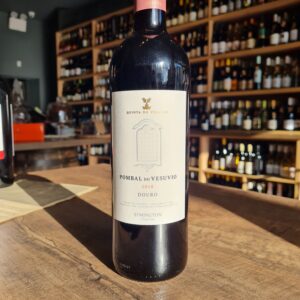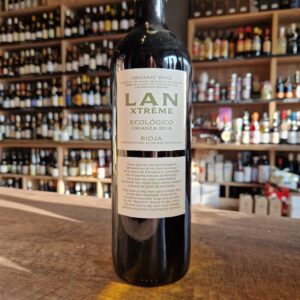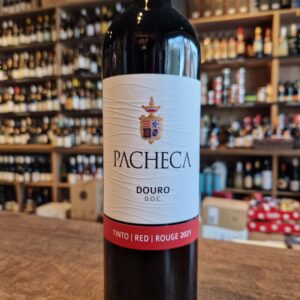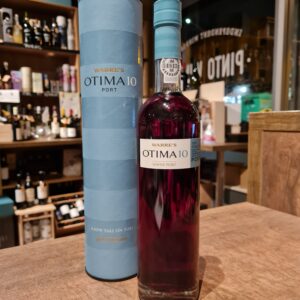-
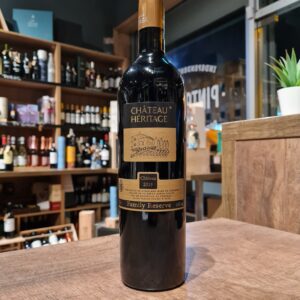 In 1888, the Touma Family established one of the first wineries and distilleries in Lebanon in the small town of Kab-elias of the Bekaa Valley (45 kilometers from Beirut) , to produce wine and Arak Touma, which is now perhaps Lebanon’s leading arak brand. Historically, the settlement goes back to the time of the Phoenicians, but the name was later changed to “Kaber Elias” (tomb of the prophet Elias), as it was believed that the prophet Elias was buried here. The Bible reports of the Prophet’s ascension to heaven in a fiery chariot at the point where John the Baptist is said to have baptized Jesus later, but the tradition of the Elijah tomb has been preserved to this day, not only among Christians, but also among the majority of the Muslim residents. During the Lebanese civil war, many Christians left Kab Elias, as they did elsewhere in Lebanon. The Touma family also had to choose to stay or leave. It was decided to stay and continue to fight and work for a presence of the Christians on the ground. In 1997, an old school building from 1932 was bought and converted into the new winery. The attempt was made to preserve the character of the original architecture in the center of Kab Elias despite all the necessary refurbishment and renovation work and alterations. Bekaa Valley is a 40-mile-long and 7-mile-wide fertile valley which is protected from rain by the Mount Lebanon mountain range to the west, and from the desert heat by the mountains on the Syrian border to the west. It lies around 1,000 metres above sea level allowing for a significant diurnal swing between the hot summer days and cool nights. The treacherous road to Beirut over the top of Mount Lebanon is frequently closed in winter due to snow. The majority of Château Héritage's vines are on the lower south-east facing slopes of Mt Lebanon, just above the winery, which ensures they're well drained with great exposure to sunlight, while being slightly cooler than the valley floor vineyards. The estate’s top wine, from their best parcels of vineyard. FOOD PAIRING: Duck, red meats, and raclette.
In 1888, the Touma Family established one of the first wineries and distilleries in Lebanon in the small town of Kab-elias of the Bekaa Valley (45 kilometers from Beirut) , to produce wine and Arak Touma, which is now perhaps Lebanon’s leading arak brand. Historically, the settlement goes back to the time of the Phoenicians, but the name was later changed to “Kaber Elias” (tomb of the prophet Elias), as it was believed that the prophet Elias was buried here. The Bible reports of the Prophet’s ascension to heaven in a fiery chariot at the point where John the Baptist is said to have baptized Jesus later, but the tradition of the Elijah tomb has been preserved to this day, not only among Christians, but also among the majority of the Muslim residents. During the Lebanese civil war, many Christians left Kab Elias, as they did elsewhere in Lebanon. The Touma family also had to choose to stay or leave. It was decided to stay and continue to fight and work for a presence of the Christians on the ground. In 1997, an old school building from 1932 was bought and converted into the new winery. The attempt was made to preserve the character of the original architecture in the center of Kab Elias despite all the necessary refurbishment and renovation work and alterations. Bekaa Valley is a 40-mile-long and 7-mile-wide fertile valley which is protected from rain by the Mount Lebanon mountain range to the west, and from the desert heat by the mountains on the Syrian border to the west. It lies around 1,000 metres above sea level allowing for a significant diurnal swing between the hot summer days and cool nights. The treacherous road to Beirut over the top of Mount Lebanon is frequently closed in winter due to snow. The majority of Château Héritage's vines are on the lower south-east facing slopes of Mt Lebanon, just above the winery, which ensures they're well drained with great exposure to sunlight, while being slightly cooler than the valley floor vineyards. The estate’s top wine, from their best parcels of vineyard. FOOD PAIRING: Duck, red meats, and raclette. -
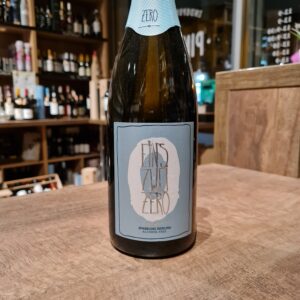 Since taking over the family estate in 1985, Johannes Leitz has made it his life’s work to return the vineyards of the Rudesheimer Berg to their former glory as one of the finest in Germany. 35 years later and Leitz wines are now recognised among Germany’s best. Using a newly-patented cool vacuum distillation process, Johannes has created the world’s best tasting zero alcohol wines. At first the very idea of Alcohol Free wine seemed a taboo. But over the years, with the winemaking skills improving and more and more better Non-Alcoholic wines being produced, slowly everyone is getting used to it. This is not sparkling grape juice. This is wine where the alcohol has been removed through a technical process. So, maybe you’re going for a dry January, or you’re expecting, or on medication. Here is a very nice option for that special dinner.
Since taking over the family estate in 1985, Johannes Leitz has made it his life’s work to return the vineyards of the Rudesheimer Berg to their former glory as one of the finest in Germany. 35 years later and Leitz wines are now recognised among Germany’s best. Using a newly-patented cool vacuum distillation process, Johannes has created the world’s best tasting zero alcohol wines. At first the very idea of Alcohol Free wine seemed a taboo. But over the years, with the winemaking skills improving and more and more better Non-Alcoholic wines being produced, slowly everyone is getting used to it. This is not sparkling grape juice. This is wine where the alcohol has been removed through a technical process. So, maybe you’re going for a dry January, or you’re expecting, or on medication. Here is a very nice option for that special dinner. -
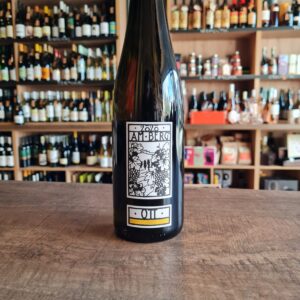 The Ott family has been growing and producing wine in the region of Wagram in Lower Austria since 1889. Bernhard Ott is of the fourth generation and has managed the winery since 1993, when he took the helm from his father. When he came home to the winery as a 21 year old, he was interested in producing wines of the highest quality. Bernhard wanted to prove that elegant and long lived wines could be produced from Grüner Veltliner grown on loess soil, specifically from Rosenberg vineyard. Bernhard replaced the old wooden casks with stainless steel and began working the vineyards with an aim for the highest high quality. In 2004 Benhard began composting, using organic cow manure from a friend in the region. In the past four years he’s used so much manure that the EU contacted him; “they didnt think it was possible to use 100,000 Euros worth of manure – they thought there was some accounting mistake. In 2006 he took a trip to the legendary biodynamic property Domaine La Romanée Conti in Vosne, with his best friend, Hans Reisetbauer. There, after a marathon tasting in the cellars with Aubert de Villaine, Bernhard committed to move to biodynamic viticulture. In 2007, with Johannes Hirsch, Fred Loimer and a group of like-minded producers, Respekt was formed. In 2014, after a very difficult harvest in which Bernhard didn’t bottle any single vineyard wines, he decided to work whole cluster saying “the stem is part of the grape. If you work without stems, you get more sweetness, more round fruit.” Today, Bernhard is looking back to previous generations for inspiration and to inform both his work in the vineyard and in the cellar. Grapes are picked at full ripeness, but thanks to biodynamic farming and composting, the sugar ripeness stays very moderate. “The compost helps with water regulation. Healthy soils give water when the weather is dry and take it back when there is too much. This also means no irrigation at all.” says Bernhard. In addition to working the soils with compost, Bernhard is a firm believer in not disrupting the eco-sysytem under the soils too much, preferring to plowing only 8cm deep. Harvest is done 100% by hand, something that is very important to note in a region who’s rolling hills and flatter landscape allow for machine harvesting. After picking and a strickt selection, the fruit is crushed in the press and maceration is done inside the press. The length of the maceration depends on the vintage, but also on the vineyard and the quality of the fruit. Bernhard uses closed pneumatic presses and has several different sizes. “This is how the press used to operate – there was only one pressing per day, so there was a maceration in the press.” explains Berhard. The juice is “browned” and racked into stainless steel where it is fermented by native yeasts without temperature control. Minimal amounts of sulfur are used at harvest and bottling and the cellar is very cold, inhibiting the development of malolactic. The single vineyard wines from the three Erste Lagen – Rosenberg, Spiegel and Stein – are on the full less until June or July before racking and bottling. The resulting wines are some of the very finest in Austria, straddling a juicy character with strong soil signatures.
The Ott family has been growing and producing wine in the region of Wagram in Lower Austria since 1889. Bernhard Ott is of the fourth generation and has managed the winery since 1993, when he took the helm from his father. When he came home to the winery as a 21 year old, he was interested in producing wines of the highest quality. Bernhard wanted to prove that elegant and long lived wines could be produced from Grüner Veltliner grown on loess soil, specifically from Rosenberg vineyard. Bernhard replaced the old wooden casks with stainless steel and began working the vineyards with an aim for the highest high quality. In 2004 Benhard began composting, using organic cow manure from a friend in the region. In the past four years he’s used so much manure that the EU contacted him; “they didnt think it was possible to use 100,000 Euros worth of manure – they thought there was some accounting mistake. In 2006 he took a trip to the legendary biodynamic property Domaine La Romanée Conti in Vosne, with his best friend, Hans Reisetbauer. There, after a marathon tasting in the cellars with Aubert de Villaine, Bernhard committed to move to biodynamic viticulture. In 2007, with Johannes Hirsch, Fred Loimer and a group of like-minded producers, Respekt was formed. In 2014, after a very difficult harvest in which Bernhard didn’t bottle any single vineyard wines, he decided to work whole cluster saying “the stem is part of the grape. If you work without stems, you get more sweetness, more round fruit.” Today, Bernhard is looking back to previous generations for inspiration and to inform both his work in the vineyard and in the cellar. Grapes are picked at full ripeness, but thanks to biodynamic farming and composting, the sugar ripeness stays very moderate. “The compost helps with water regulation. Healthy soils give water when the weather is dry and take it back when there is too much. This also means no irrigation at all.” says Bernhard. In addition to working the soils with compost, Bernhard is a firm believer in not disrupting the eco-sysytem under the soils too much, preferring to plowing only 8cm deep. Harvest is done 100% by hand, something that is very important to note in a region who’s rolling hills and flatter landscape allow for machine harvesting. After picking and a strickt selection, the fruit is crushed in the press and maceration is done inside the press. The length of the maceration depends on the vintage, but also on the vineyard and the quality of the fruit. Bernhard uses closed pneumatic presses and has several different sizes. “This is how the press used to operate – there was only one pressing per day, so there was a maceration in the press.” explains Berhard. The juice is “browned” and racked into stainless steel where it is fermented by native yeasts without temperature control. Minimal amounts of sulfur are used at harvest and bottling and the cellar is very cold, inhibiting the development of malolactic. The single vineyard wines from the three Erste Lagen – Rosenberg, Spiegel and Stein – are on the full less until June or July before racking and bottling. The resulting wines are some of the very finest in Austria, straddling a juicy character with strong soil signatures. -
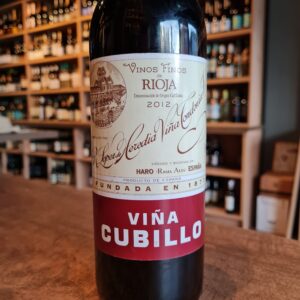 Viña Cubillo wines come from the vineyard called Viña Cubillas, some 4 km away from the bodega, which as with all of the other vineyards, was bought by our founder. Historically these wines were called "Special Harvest". For 143 years, four generations of the López de Heredia family have devoted themselves to producing exceptional and unique wines. Masterpieces which have achieved that which the founder of the company, Rafael López de Heredia y Landeta, defined in the late nineteenth century as the "Supreme Rioja". Vineyard care, a scrupulous selection of grapes, ageing in oak barrels in the heart of deep underground galleries, and the later ageing in bottles, all contribute to making these illustrious wines with their exceptional bouquet. Decant it for an hour if possible, It goes perfectly with all meat dishes, tapas and assorted antipasti, sausages, small game and wild mushrooms.
Viña Cubillo wines come from the vineyard called Viña Cubillas, some 4 km away from the bodega, which as with all of the other vineyards, was bought by our founder. Historically these wines were called "Special Harvest". For 143 years, four generations of the López de Heredia family have devoted themselves to producing exceptional and unique wines. Masterpieces which have achieved that which the founder of the company, Rafael López de Heredia y Landeta, defined in the late nineteenth century as the "Supreme Rioja". Vineyard care, a scrupulous selection of grapes, ageing in oak barrels in the heart of deep underground galleries, and the later ageing in bottles, all contribute to making these illustrious wines with their exceptional bouquet. Decant it for an hour if possible, It goes perfectly with all meat dishes, tapas and assorted antipasti, sausages, small game and wild mushrooms. -
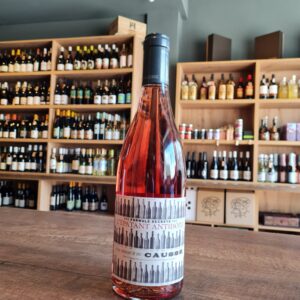 Combel La Serre has been certified organic since 2013, though farmed without chemicals for several decades up to that point. 100% Malbec (known in Cahors as Auxerrois). The vines are 40 years old, grown on clay and limestone soils at an elevation of 320m. Fermentation and aging take place in small tanks."The Splendid Antidote to the Heat of the Causse" is the amusing and appropriate name of this refreshing rosé. (The Causse is the high limestone plateau around Cahors, which gets brutally hot in the summer.) The wine shows a pretty pink/orange color and aromas of ripe cherry, raspberry and cassis with citrus and spice. There are creamy cassis, raspberry and citrus flavors on the palate which shows lovely ripeness and density, with hints of orange peel, earth, smoke and brown spice that continue in the long finish. This is quite delicious and a great value - as are all the wines from Jean-Pierre and Julien Ilbert at Combel-la-Serre. Great Value
Combel La Serre has been certified organic since 2013, though farmed without chemicals for several decades up to that point. 100% Malbec (known in Cahors as Auxerrois). The vines are 40 years old, grown on clay and limestone soils at an elevation of 320m. Fermentation and aging take place in small tanks."The Splendid Antidote to the Heat of the Causse" is the amusing and appropriate name of this refreshing rosé. (The Causse is the high limestone plateau around Cahors, which gets brutally hot in the summer.) The wine shows a pretty pink/orange color and aromas of ripe cherry, raspberry and cassis with citrus and spice. There are creamy cassis, raspberry and citrus flavors on the palate which shows lovely ripeness and density, with hints of orange peel, earth, smoke and brown spice that continue in the long finish. This is quite delicious and a great value - as are all the wines from Jean-Pierre and Julien Ilbert at Combel-la-Serre. Great Value -
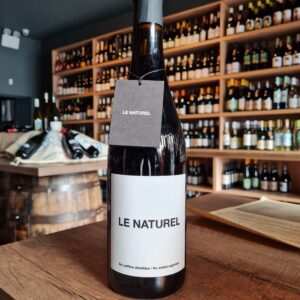 Le Naturel lives up to its name, it is a wine in which the Garnacha is expressed with great openness. On the nose aromas of blackberries and violets appear, while in the mouth it has a good attack of fresh fruit, typical of high altitude vineyards.It is a natural wine, without added sulfites, which also has the certificate of organic and vegan wine. With the aim of minimal intervention (in the field and in the winery) we found in Bodegas Aroa - Le Naturel a specimen of pure and enjoyable Grenache. Specially designed for consumption soon it is open and not for storage. Bodegas Aroa (Vintae group) is located in Zurucuáin, in the heart of the Yerri Valley , sheltered by the Urbasa and Andía Sierras. This winery is one of the pioneers in Navarra in its commitment to the recovery of organic farming practices .
Le Naturel lives up to its name, it is a wine in which the Garnacha is expressed with great openness. On the nose aromas of blackberries and violets appear, while in the mouth it has a good attack of fresh fruit, typical of high altitude vineyards.It is a natural wine, without added sulfites, which also has the certificate of organic and vegan wine. With the aim of minimal intervention (in the field and in the winery) we found in Bodegas Aroa - Le Naturel a specimen of pure and enjoyable Grenache. Specially designed for consumption soon it is open and not for storage. Bodegas Aroa (Vintae group) is located in Zurucuáin, in the heart of the Yerri Valley , sheltered by the Urbasa and Andía Sierras. This winery is one of the pioneers in Navarra in its commitment to the recovery of organic farming practices . -
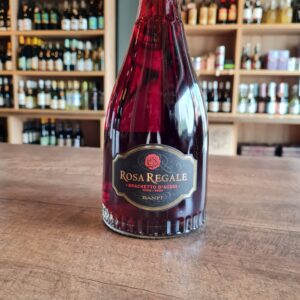 Rosa Regale is created in one of Italy's smallest production zones, the Brachetto d'Acqui DOCG. It is crafted 100% Brachetto grapes grown exclusively at the La Rosa Vineyard in the town of Acqui Terme located in the Piedmont Region of Italy. The Label features a single red rose, representing the wine's origin from this single vineyard La Rosa estate. This is a sweet, aromatic wine great for a celebration or a afternoon tea with friends. Pop open the bubbly, Enjoy!
Rosa Regale is created in one of Italy's smallest production zones, the Brachetto d'Acqui DOCG. It is crafted 100% Brachetto grapes grown exclusively at the La Rosa Vineyard in the town of Acqui Terme located in the Piedmont Region of Italy. The Label features a single red rose, representing the wine's origin from this single vineyard La Rosa estate. This is a sweet, aromatic wine great for a celebration or a afternoon tea with friends. Pop open the bubbly, Enjoy! -
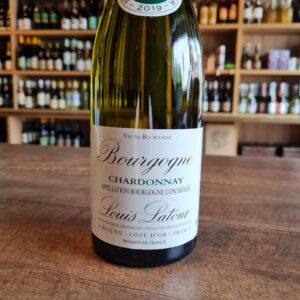 The result of a long history, Burgundy and its wines are known worldwide. Chardonnay being a native grape to the area, perfectly matches the terroir of Burgundy: poor soils or calcareous marl, perfect exposure but a temperate climate. As a result the sugar content can reach a high level whilst maintaining a balance of fruit and acidity. Thanks to a careful selection, Maison Louis Latour is able to produce a rich and expressive Chardonnay. This wine is intense, powerful and fruity. A complexe wine with a nice aromatic persistence. Food Pairing, aperitif - shellfish - charcuterie - grilled fish
The result of a long history, Burgundy and its wines are known worldwide. Chardonnay being a native grape to the area, perfectly matches the terroir of Burgundy: poor soils or calcareous marl, perfect exposure but a temperate climate. As a result the sugar content can reach a high level whilst maintaining a balance of fruit and acidity. Thanks to a careful selection, Maison Louis Latour is able to produce a rich and expressive Chardonnay. This wine is intense, powerful and fruity. A complexe wine with a nice aromatic persistence. Food Pairing, aperitif - shellfish - charcuterie - grilled fish -
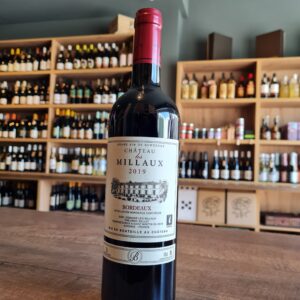 With a very good structure and fine crimson colour, this Bordeaux Supérieur is a really pleasant wine to drink.The merlot dominant variety offers extraordinary fruitiness with mellow tannins resulting in supple wines that are easy to drink. The cabernet sauvignon and cabernet franc gives a good structure to the wine. Aromas of tropical fruits and red fruits give a complex bouquet. All these features offer a wine that can be enjoyed with red meats and barbecues.
With a very good structure and fine crimson colour, this Bordeaux Supérieur is a really pleasant wine to drink.The merlot dominant variety offers extraordinary fruitiness with mellow tannins resulting in supple wines that are easy to drink. The cabernet sauvignon and cabernet franc gives a good structure to the wine. Aromas of tropical fruits and red fruits give a complex bouquet. All these features offer a wine that can be enjoyed with red meats and barbecues. -
Out of stock
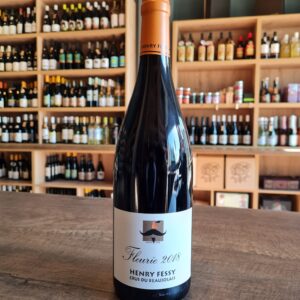 Lying on homogeneous soils of pink granite containing large crystals, Fleurie is often regarded as the ''Queen of Beaujolais'' with their vines averaging 50 years old. The wines are characterized by great finesse and elegance with floral aromas of irises and violets. An elegant and delicate wine. Lovely paired with roasted chicken, grilled meats and semi-cured cheeses
Lying on homogeneous soils of pink granite containing large crystals, Fleurie is often regarded as the ''Queen of Beaujolais'' with their vines averaging 50 years old. The wines are characterized by great finesse and elegance with floral aromas of irises and violets. An elegant and delicate wine. Lovely paired with roasted chicken, grilled meats and semi-cured cheeses -
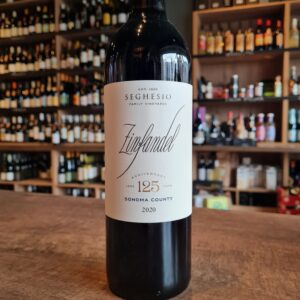 The Seghesio family began making wine in California in 1895 when Edoardo Seghesio planted Zinfandel vines in Alexander Valley. Over the intervening years the third generation of the family, Pete Seghesio and his cousin Ted Seghesio, established the estate as a top producer of Californian Zinfandel. Today the winery has 120 hectares of vineyards which are all farmed sustainably in the appellations of Dry Creek Valley, Alexander Valley and Russian River Valley. The vines for this bottling come from estate vineyards in Dry Creek and Alexander Valley with careful management of yields to ensure excellent quality. The robust flavour profile makes this a great partner for barbecued meats and steak, although it can also be kept in the cellar for another few years.
The Seghesio family began making wine in California in 1895 when Edoardo Seghesio planted Zinfandel vines in Alexander Valley. Over the intervening years the third generation of the family, Pete Seghesio and his cousin Ted Seghesio, established the estate as a top producer of Californian Zinfandel. Today the winery has 120 hectares of vineyards which are all farmed sustainably in the appellations of Dry Creek Valley, Alexander Valley and Russian River Valley. The vines for this bottling come from estate vineyards in Dry Creek and Alexander Valley with careful management of yields to ensure excellent quality. The robust flavour profile makes this a great partner for barbecued meats and steak, although it can also be kept in the cellar for another few years. -
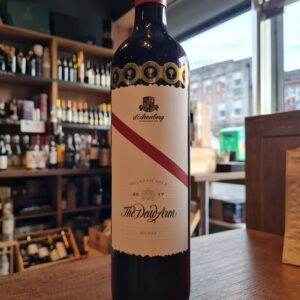 The Dead Arm is d’Arenberg’s flagship Shiraz and takes its name from a vine disease that kills off one “arm” of the plant while the other side of the vine produces remarkably intense and delicious fruit. The grapes for this bottling come from low yielding old vines on the estate which are harvested in small parcels and vinified plot by plot to give maximum control over the blending. Established in 1912, d’Arenberg is one of the McLaren Vale’s most iconic wineries which boasts some extremely old Shiraz vines planted back in the 1880s. The estate’s chief winemaker is Chester Osborn, the great-grandson of d’Arenberg’s original founder Joseph Rowe Osborn who was actually a teetotaler who used to sell his grapes on to local wineries. Powerful and ageworthy wine with firm tannins and a well-developed structure that will respond well another couple of decade or so in the cellar. Pair with hearty red meat dishes if you’d prefer to enjoy it now.
The Dead Arm is d’Arenberg’s flagship Shiraz and takes its name from a vine disease that kills off one “arm” of the plant while the other side of the vine produces remarkably intense and delicious fruit. The grapes for this bottling come from low yielding old vines on the estate which are harvested in small parcels and vinified plot by plot to give maximum control over the blending. Established in 1912, d’Arenberg is one of the McLaren Vale’s most iconic wineries which boasts some extremely old Shiraz vines planted back in the 1880s. The estate’s chief winemaker is Chester Osborn, the great-grandson of d’Arenberg’s original founder Joseph Rowe Osborn who was actually a teetotaler who used to sell his grapes on to local wineries. Powerful and ageworthy wine with firm tannins and a well-developed structure that will respond well another couple of decade or so in the cellar. Pair with hearty red meat dishes if you’d prefer to enjoy it now. -
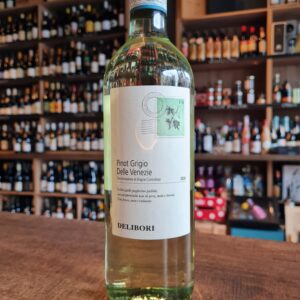 The Delibori Pinot Grigio delle Venezie impresses with its elegantly dry taste. It was bottled with exceptionally low residual sugar. This is a true quality wine, which clearly stands out from simpler qualities and so this Italian naturally enchants with the finest balance despite all dryness. Excellent taste does not necessarily require a lot of sugar. Light-footed and multi-layered, this light white wine presents itself on the palate. The final of this youthful white wine from the wine-growing region of Veneto, more precisely from Delle Venezie DOC, finally convinces with good reverberation. Best enjoyed moderately chilled at 11 - 13°C. It is perfect as an accompaniment to pumpkin casserole, vegetable stew with pesto or leek tortilla.
The Delibori Pinot Grigio delle Venezie impresses with its elegantly dry taste. It was bottled with exceptionally low residual sugar. This is a true quality wine, which clearly stands out from simpler qualities and so this Italian naturally enchants with the finest balance despite all dryness. Excellent taste does not necessarily require a lot of sugar. Light-footed and multi-layered, this light white wine presents itself on the palate. The final of this youthful white wine from the wine-growing region of Veneto, more precisely from Delle Venezie DOC, finally convinces with good reverberation. Best enjoyed moderately chilled at 11 - 13°C. It is perfect as an accompaniment to pumpkin casserole, vegetable stew with pesto or leek tortilla. -
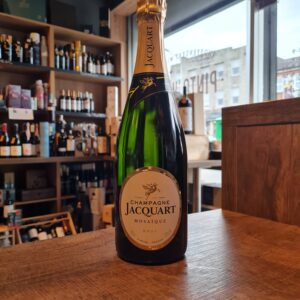 The vineyards cultivated by Jacquart winemakers cover 2,400 ha spread over sixty crus, that is to say, sixty villages throughout the Champagne area – what a mosaic! It’s within this large range of sites in Champagne that their winemaker draws together the different shades through careful assemblage, creating a cuvée that is ethereal and which seduces lovers of JACQUART. Brut Mosaïque is a wine for all times, sharing the pleasures of daily life, celebrating good news, and friends that pop round unexpectedly – this is the champagne you always have in the fridge. «Our Brut Mosaïque elegantly shows the uniqueness of our style, expressing the result of selection and choices without compromise.» Floriane Eznack THE FACTS A blend where Chardonnay is the dominant grape variety (35%-40%), giving Brut Mosaïque its freshness and delicate aromas. Pinot Noir (30%-35%) adds structure and Pinot Meunier (25% -30%) brings fruit.The grapes are sourced from exceptional terroirs, including the Grands Crus of the Côte des Blancs and the Montagne de Reims. The presence of 25% reserve wine ensures regularity of style, while more than three years ageing and a light dosage of 10 g/l result in a balanced and complex champagne. There is a time and place for this bubbly and that is anytime and everywhere! Day or night, as an aperitif or with fish or cheese. For a special occasion or for sharing with friends, Brut Mosaïque makes the moment.
The vineyards cultivated by Jacquart winemakers cover 2,400 ha spread over sixty crus, that is to say, sixty villages throughout the Champagne area – what a mosaic! It’s within this large range of sites in Champagne that their winemaker draws together the different shades through careful assemblage, creating a cuvée that is ethereal and which seduces lovers of JACQUART. Brut Mosaïque is a wine for all times, sharing the pleasures of daily life, celebrating good news, and friends that pop round unexpectedly – this is the champagne you always have in the fridge. «Our Brut Mosaïque elegantly shows the uniqueness of our style, expressing the result of selection and choices without compromise.» Floriane Eznack THE FACTS A blend where Chardonnay is the dominant grape variety (35%-40%), giving Brut Mosaïque its freshness and delicate aromas. Pinot Noir (30%-35%) adds structure and Pinot Meunier (25% -30%) brings fruit.The grapes are sourced from exceptional terroirs, including the Grands Crus of the Côte des Blancs and the Montagne de Reims. The presence of 25% reserve wine ensures regularity of style, while more than three years ageing and a light dosage of 10 g/l result in a balanced and complex champagne. There is a time and place for this bubbly and that is anytime and everywhere! Day or night, as an aperitif or with fish or cheese. For a special occasion or for sharing with friends, Brut Mosaïque makes the moment. -
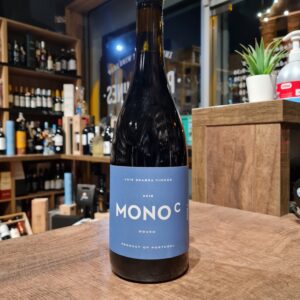 Luis Seabra is a producer that is at the forefront of the “new Douro” movement. Rather than making table wines that are, for all intents and purposes, “Little Ports,” Luis has taken a more balanced, restrained approach to winemaking in the oldest demarcated wine region in the world. His guiding principles are showcasing terroir and nuance above power and extraction. Bright, mineral driven and elegant, Luis’ wines are typically exposés of soil type. With the Mono C, he is taking a look at a particular variety – in this case, Castelão. While Castelão is a grape that is typically found further south in Portugal, Luis has found a mono-planted plot of the light-skinned grape in the Douro and is working his magic to craft a wine of unparalleled delicacy and elegance. Would pair it with charcuterie, grilled pork dishes, roasted poultry
Luis Seabra is a producer that is at the forefront of the “new Douro” movement. Rather than making table wines that are, for all intents and purposes, “Little Ports,” Luis has taken a more balanced, restrained approach to winemaking in the oldest demarcated wine region in the world. His guiding principles are showcasing terroir and nuance above power and extraction. Bright, mineral driven and elegant, Luis’ wines are typically exposés of soil type. With the Mono C, he is taking a look at a particular variety – in this case, Castelão. While Castelão is a grape that is typically found further south in Portugal, Luis has found a mono-planted plot of the light-skinned grape in the Douro and is working his magic to craft a wine of unparalleled delicacy and elegance. Would pair it with charcuterie, grilled pork dishes, roasted poultry -
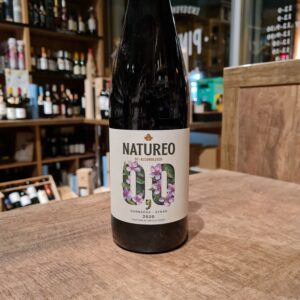 Red wine without alcohol (dealcoholized) made with Grenache and Syrah grapes.5% of the coupage maintains a brief aging in new French oak and subsequently undergoes the dealcoholisation process, maintaining all its aroma and flavour. This non-alcoholic red wine has an intense and delicious flavour. If you are a lover of red wines and want to avoid alcohol, this is a good option. If you do find the fruit coming up too strong, try chilling it to lower that strength. Serve it with pasta, roasts and game dishes
Red wine without alcohol (dealcoholized) made with Grenache and Syrah grapes.5% of the coupage maintains a brief aging in new French oak and subsequently undergoes the dealcoholisation process, maintaining all its aroma and flavour. This non-alcoholic red wine has an intense and delicious flavour. If you are a lover of red wines and want to avoid alcohol, this is a good option. If you do find the fruit coming up too strong, try chilling it to lower that strength. Serve it with pasta, roasts and game dishes -
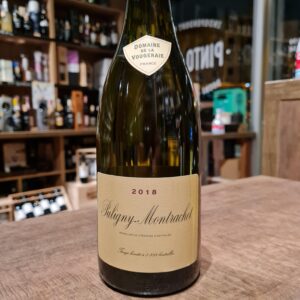 Domaine de La Vougeraie is born from the assembly of domains acquired over time and the vines of the family. Its history dates back to 1964 with the first vine, Les Evocelles, acquired by our father at his very beginnings. Here, it is in his village that he will have his first lands around Gevrey-Chambertin. The reputation of Domaine de la Vougeraie is well established. This area of excellence is located in Premeaux-Prissey, a small village in Burgundy , near Nuits-Saint-Georges, in the Côte de Nuits . For this cuvée, the estate brings together two small plots in the “ La Rue aux Vaches ” and “ Noyer Bret ” climates . They are planted with Chardonnay and worked in biodynamics , homeopathy applied to the vine. 2018 was a generous, sunny vintage, which managed to maintain a good level of freshness Sylvie Poillot, General Manager, farms the estate’s 42 hectares biodynamically. “We do this to preserve the fertility of soils, and to have a very good balance between the soil and the plant’s health,” she explains. It’s not just the soil health that’s changed: two decades on from their conversion to biodynamics, the wines are evolving too: “The wines are more aromatic and more expressive year after year,” she says. A fascinating 2018: on the one hand, it’s opulent with the warmth of the vintage; on the other, it’s tight with typical Puligny fruit, stone and bite. A superior example. Drink 2022-2028 Great with grilled fish, scallops, lobster, lobster
Domaine de La Vougeraie is born from the assembly of domains acquired over time and the vines of the family. Its history dates back to 1964 with the first vine, Les Evocelles, acquired by our father at his very beginnings. Here, it is in his village that he will have his first lands around Gevrey-Chambertin. The reputation of Domaine de la Vougeraie is well established. This area of excellence is located in Premeaux-Prissey, a small village in Burgundy , near Nuits-Saint-Georges, in the Côte de Nuits . For this cuvée, the estate brings together two small plots in the “ La Rue aux Vaches ” and “ Noyer Bret ” climates . They are planted with Chardonnay and worked in biodynamics , homeopathy applied to the vine. 2018 was a generous, sunny vintage, which managed to maintain a good level of freshness Sylvie Poillot, General Manager, farms the estate’s 42 hectares biodynamically. “We do this to preserve the fertility of soils, and to have a very good balance between the soil and the plant’s health,” she explains. It’s not just the soil health that’s changed: two decades on from their conversion to biodynamics, the wines are evolving too: “The wines are more aromatic and more expressive year after year,” she says. A fascinating 2018: on the one hand, it’s opulent with the warmth of the vintage; on the other, it’s tight with typical Puligny fruit, stone and bite. A superior example. Drink 2022-2028 Great with grilled fish, scallops, lobster, lobster -
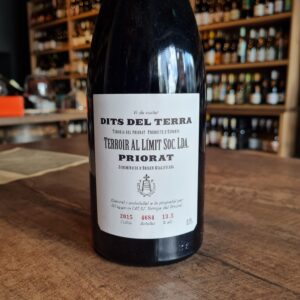 The wine Priorat Dits del Terra is a red wine produced in the Catalunya region, more precisely Priorat or the Torroja del Priorat in Spain, by Terroir al Limit. The vineyards are south facing in the sun-baked slate hills of Priorat and 60+ year old carignan vines are not usually harbingers of floral elegance and silken grace. And yet this gap between expectation and stunning creation is precisely what makes Dits de Terra so iconic. The vineyard, one of the original Terroir Al Limit holdings, honors the Cyprus trees that shade the historic Eremitas throughout the region. It is crafted using whole bunch fermentation and initial vinification in cement, then afforded a rare gift: time, in the form of 16 months in Stockinger foudres and cement, with a gentle and unobtrusive elevage. This care and attention elevates it into a fine, complex and fluid expression of different terroirs. The dark depths in the glass belie its ephemeral lightness in aroma and flavor. Breathy black fruits and a persistent herbality enhance the supple spice and suspended movement across the palate. Anise, fresh fennel and rose notes are underscored with a fluid web of balsamic accents - never weighty nor wide. The wine exudes gravitas with the elegant confidence that comes only from complete comfort in one’s own skin. Only 2000 bottles produced, Masterclass of a wine!
The wine Priorat Dits del Terra is a red wine produced in the Catalunya region, more precisely Priorat or the Torroja del Priorat in Spain, by Terroir al Limit. The vineyards are south facing in the sun-baked slate hills of Priorat and 60+ year old carignan vines are not usually harbingers of floral elegance and silken grace. And yet this gap between expectation and stunning creation is precisely what makes Dits de Terra so iconic. The vineyard, one of the original Terroir Al Limit holdings, honors the Cyprus trees that shade the historic Eremitas throughout the region. It is crafted using whole bunch fermentation and initial vinification in cement, then afforded a rare gift: time, in the form of 16 months in Stockinger foudres and cement, with a gentle and unobtrusive elevage. This care and attention elevates it into a fine, complex and fluid expression of different terroirs. The dark depths in the glass belie its ephemeral lightness in aroma and flavor. Breathy black fruits and a persistent herbality enhance the supple spice and suspended movement across the palate. Anise, fresh fennel and rose notes are underscored with a fluid web of balsamic accents - never weighty nor wide. The wine exudes gravitas with the elegant confidence that comes only from complete comfort in one’s own skin. Only 2000 bottles produced, Masterclass of a wine! -
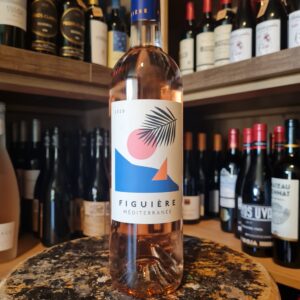 Here is a Provençal estate rosé sure to add some style to your summer! One smell, one sip and you get beamed to the Mediterranean Sea! This delicious Rosé is created by a pioneering Provence domaine of excellence. The family Combard is one of the ambassadors of a new generation of prestigious winemakers. You can smell notes of white flowers that then develop into white peach aromas. The palate expresses the velvety texture of citrus peel and the zestiness of an essential oil. Citrus profile with this wine that is astringent, green, tight and fresh.
Here is a Provençal estate rosé sure to add some style to your summer! One smell, one sip and you get beamed to the Mediterranean Sea! This delicious Rosé is created by a pioneering Provence domaine of excellence. The family Combard is one of the ambassadors of a new generation of prestigious winemakers. You can smell notes of white flowers that then develop into white peach aromas. The palate expresses the velvety texture of citrus peel and the zestiness of an essential oil. Citrus profile with this wine that is astringent, green, tight and fresh. -
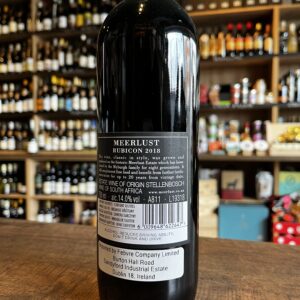
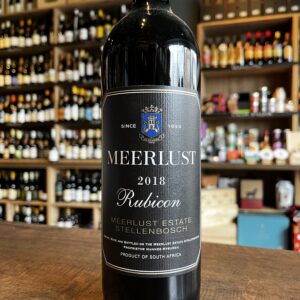 Meerlust Rubicon had a great impact on the history of South African wine. First made in 1980, it essentially set the pattern for Bordeaux blends in the country. There was of course a few pioners at this front that only used Cabernet Sauvignon varietal such as Kanonkop (Paul Sauer) in 1973 but as a blend as per Bordeaux style Meerlust changed the scene. According to Hannes Myburgh, his father was inspired by Julious Cesar words “Alea iacta est. The die is cast,” leading his troops towards Rome in 49BC. As this was a irreversable moment in history as there was no turning back after crossing the Rubicon river as this profoundly shifted Roman politics. Nico Myburgh from the 7th generation of the Meerlust estate and father of the current custodian, was holidaying in Bordeaux when he discovered that the terroir in this area of France was similar to that of the Eerste River Valley. Both have a distinctive climate, characterised by a cooling sea breeze. And both have a soil structure made up of decomposed granite and clay. The red wines produced by the two regions, however, were very different. Unlike the Western Cape’s specified cultivars, Bordeaux thrived on producing blends. Nico returned to Meerlust, filled with inspiration and the desire to create a blend of his own that would match those of the French. In 1980, after several years of experimentation together with winemaker Giorgio Dalla Cia, he announced the birth of the new blend. With proportions of 70% Cabernet Sauvignon, 20% Merlot and 10% Cabernet Franc, a new style of wine had been created in South Africa. Like Caesar, there could be no turning back. Nico and Giorgio had already considered a number of names for the new blend when Professor Dirk Opperman from the University of Stellenbosch, a friend of Nico’s suggested that “Rubicon” might be appropriate. The pair had, after all, crossed a new frontier – and changed the way South Africans thought about red wine. The Cabernet Sauvignon, Merlot, Cabernet Franc and Petit Verdot vineyards are hand harvested from February through to March and each individual vineyard block is kept separate throughout the fermentation process and monitored until the moment of blending.In wintertime, after malolactic fermentation has allowed the personality of each vineyard to assert itself in barrel, the wines are carefully assessed to produce the most expressive, harmonious and complex wine. The blend is assembled and then allowed another year in barrel for the components to harmonise. The wine is finally bottled and left for a further 2 years before release. Rubicon is always released at four years of age and will immediately offer the distinctive character and quality of the Estate. However, further bottle maturation is advised for the intriguing complexity of this classic wine to unfold and reveal itself.The first vintage, the 1980, remains vivacious and very much alive, even 30+ years after vintage. Subsequent vintages all express the personality and characteristics of their specific year. All vintages of Rubicon, however, share the hallmarks of wines grown at this special place: intensity, harmony, vibrancy, complexity and individuality.I suppose we could use here ''Veni, vidi, vici''
Meerlust Rubicon had a great impact on the history of South African wine. First made in 1980, it essentially set the pattern for Bordeaux blends in the country. There was of course a few pioners at this front that only used Cabernet Sauvignon varietal such as Kanonkop (Paul Sauer) in 1973 but as a blend as per Bordeaux style Meerlust changed the scene. According to Hannes Myburgh, his father was inspired by Julious Cesar words “Alea iacta est. The die is cast,” leading his troops towards Rome in 49BC. As this was a irreversable moment in history as there was no turning back after crossing the Rubicon river as this profoundly shifted Roman politics. Nico Myburgh from the 7th generation of the Meerlust estate and father of the current custodian, was holidaying in Bordeaux when he discovered that the terroir in this area of France was similar to that of the Eerste River Valley. Both have a distinctive climate, characterised by a cooling sea breeze. And both have a soil structure made up of decomposed granite and clay. The red wines produced by the two regions, however, were very different. Unlike the Western Cape’s specified cultivars, Bordeaux thrived on producing blends. Nico returned to Meerlust, filled with inspiration and the desire to create a blend of his own that would match those of the French. In 1980, after several years of experimentation together with winemaker Giorgio Dalla Cia, he announced the birth of the new blend. With proportions of 70% Cabernet Sauvignon, 20% Merlot and 10% Cabernet Franc, a new style of wine had been created in South Africa. Like Caesar, there could be no turning back. Nico and Giorgio had already considered a number of names for the new blend when Professor Dirk Opperman from the University of Stellenbosch, a friend of Nico’s suggested that “Rubicon” might be appropriate. The pair had, after all, crossed a new frontier – and changed the way South Africans thought about red wine. The Cabernet Sauvignon, Merlot, Cabernet Franc and Petit Verdot vineyards are hand harvested from February through to March and each individual vineyard block is kept separate throughout the fermentation process and monitored until the moment of blending.In wintertime, after malolactic fermentation has allowed the personality of each vineyard to assert itself in barrel, the wines are carefully assessed to produce the most expressive, harmonious and complex wine. The blend is assembled and then allowed another year in barrel for the components to harmonise. The wine is finally bottled and left for a further 2 years before release. Rubicon is always released at four years of age and will immediately offer the distinctive character and quality of the Estate. However, further bottle maturation is advised for the intriguing complexity of this classic wine to unfold and reveal itself.The first vintage, the 1980, remains vivacious and very much alive, even 30+ years after vintage. Subsequent vintages all express the personality and characteristics of their specific year. All vintages of Rubicon, however, share the hallmarks of wines grown at this special place: intensity, harmony, vibrancy, complexity and individuality.I suppose we could use here ''Veni, vidi, vici''


